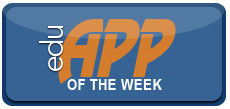Two concerns are often raised when department chairs attempt to address breaches of collegiality through the faculty evaluation process. The first is whether they’re permitted to do so at all, since very few faculty handbooks list collegiality as a criterion for reviews. The second is whether evaluation is an effective means of dealing with these challenges, since collegiality is often regarded as something highly subjective and not measurable or verifiable in any consistent way. The first of these concerns can be dealt with rather quickly, while the second will require a much more extended discussion.
Read more ›CURRENT ARTICLE • October 08
OTHER RECENT ARTICLES
 What do we hope to accomplish when we are teaching? Students will learn the material, become excited about the material, learn to think critically? Ultimately, I think most of us are hoping that our students will connect, or engage, with the material. There is evidence that getting students to engage with the material is an important process in the learning experience (e.g., Umbach & Wawrzynski, 2005). I recently tried something new in an attempt to help my students make that connection. This is my story of an assignment that successfully helped my students connect with the material.
What do we hope to accomplish when we are teaching? Students will learn the material, become excited about the material, learn to think critically? Ultimately, I think most of us are hoping that our students will connect, or engage, with the material. There is evidence that getting students to engage with the material is an important process in the learning experience (e.g., Umbach & Wawrzynski, 2005). I recently tried something new in an attempt to help my students make that connection. This is my story of an assignment that successfully helped my students connect with the material.
It seems like everyone is talking about the flipped classroom. But how do you use this new model to construct lessons and assessments that reinforce student learning?
Read More ›Increasingly, educators are searching for video resources online by sifting through YouTube, searching on Google, and visiting various topical sites. However, what’s often required is quite specific and it can be hard to find exactly what you need.
Read More ›The Sloan Consortium Announces Recipients of 2013 Sloan-C Awards Honoring Excellence in Online Teaching and Learning
The Sloan Consortium (Sloan-C) announced today it will present its 2013 Sloan-C Awards at the 19th Annual Sloan Consortium International Conference on Online Learning, at the Walt Disney World Swan and Dolphin Resort, Lake Buena Vista, Florida, Thursday, Nov. 21, 2013.
Read More ›I was looking at participation policies in a collection of syllabi this week. I wouldn’t give most of them high marks—lots of vague descriptions that don’t functionally define participation and then prescribe instructor assessment at the end of course with little or no mention of criteria. But I’ve voiced my concerns about participation policies previously, so I won’t do again here. Instead, what I would like to share with you is a policy that’s impressive in its specificity and in the intriguing idea it contains.
Here’s an excerpt from the syllabus:
Student retention is an ongoing challenge to online educators. While there is great variation in retention rates across programs and institutions, online retention rates tend to be significantly lower than those in the face-to-face environment. However, not all online educators struggle with student retention. Kari Frisch, a communications professor at Central Lakes College, has consistent retention rates of around 95 percent in her online courses, which include interpersonal communication, intercultural communication, mass communication, and online social networking. In an interview with Online Classroom, Frisch talked about the factors that she believes help her achieve such high retention rates.
Read More ›The most effective teachers vary their styles depending on the nature of the subject matter, the phase of the course, and other factors. By so doing, they encourage and inspire students to do their best at all times throughout the semester.
Read More ›
|
The average person probably remembers more of what they see than what they hear. For example, you’re likely to readily remember a person’s face more easily than you would his name. However, according to molecular biologist John Medina, the key to more remembering what we see and hear is enhanced when repetition is involved. Don’t get me wrong, I am not advocating mass memorization of anything by anyone. Memorization is necessary in some cases, but given the easy access to all kinds of information, I see little reason for my students to commit large amounts of information to organic memory as opposed to knowing how and where to find it. What I am merely suggesting is that frequent re-exposure to snippets of content will likely aid understanding of what was presented or discussed. I have found that the podcast is one way to provide short bits of information for clarification purposes or as a way to provide expanded discussion of something that I covered in class.
Here are two key guidelines to follow when developing a podcast:
- Keep it short - Podcasts should address only one topic or concept at a time; and
- Add value - Podcasts should not simply replicate something that already exists verbatim on paper. There should be some added value to what is shared in this new format.
I use podcasts in a variety of ways and so could you. I use podcasts to welcome students to my classes, to provide clarification on assignments or course content, and even to provoke emotional responses to something we are discussing in class. Here is an example of an emotional response podcast using the app Voice Record Pro (HD), Humans as Technology.
What I just shared with you was a 2.5 minute snippet from my Technology and Society class where I was attempting to establish a starting point about what technology may or may not be. Keep in mind that the sample shared is addressed much more in-depth in class. You may say, well, why would students want to come to class if some of the class content is addressed in a podcast? Fair question. My intent in using podcasts is not to address all of the content just one small part of it. Additionally, I am hoping that what I talk about serves as a way to draw students in and is interesting enough for them to want to come to class. Alternatively, it could be that what I say in the podcast encourages them to come to class because they feel compelled to challenge the notion of humans being classified as technology. And finally, I hope that what I present might offer something a bit different, and serve as a trigger for what I covered in class. If my podcast serves any one of the aforementioned purposes, then the tool is well worth using with my students.
There are many other voice recording apps, but I’m, all about “cheap and efficient” when it comes to apps. Voice Record Pro fits the bill for me and I think it will for you, too. The interface is easy to use and allow you to perform rudimentary edits, although you may have to use a program like Audacity if you want to have more editing options. I particularly like the fact that I can convert my recordings to the popular mp3 format used by most, if not all, portable devices that our students carry around with them. Best of all, Voice Record Pro provides a host of options for sharing created podcasts and lets me give each podcast a unique name. The latest update to the app adds some additional bells and whistles that I will let you discover on your own. Here are two screen shots of the app both of which are fairly straightforward.
| The start screen. |
| The Edit/Share Screen |
Summary:
Voice Record Pro (HD) is one of many available voice recorders but the cost (it’s free!) and the app’s simple interface makes it a cinch to use. Here is how easy it is to get started:
- Touch the ‘Record’ button to begin, then ‘Pause’ to take a break, and ‘Stop’ to finish your recording.
- Touch the ‘Back’ button to navigate to a listing of all recordings made.
- Selecting a recording will bring up a variety of share options including naming, simple editing options, and converting your file to an mp3 format.
What could be easier than that? Of course, there is an ‘Edit’ button, but if you plan your podcast well, follow a short prepared script, and keep your podcast short, who needs, an edit button?
Dave Yearwood, Professor and Chair of the Technology Department at the University of North Dakota.
Read More › Teamwork is an important skill for students in every major. But despite its importance, most students do not know how to work together as a team. Their individual objectives take precedence over group goals. They can tell you what they are expected to produce. They may be able to tell you what type of group they were intended to be, whether task, educational, or support. They may even be able to tell you the components needed for groups to be successful—such as communication, a strong leader, and a common purpose. But they cannot tell you how the group will operate as a unit or the roles and responsibilities of individual members necessary to deliver quality products.
Teamwork is an important skill for students in every major. But despite its importance, most students do not know how to work together as a team. Their individual objectives take precedence over group goals. They can tell you what they are expected to produce. They may be able to tell you what type of group they were intended to be, whether task, educational, or support. They may even be able to tell you the components needed for groups to be successful—such as communication, a strong leader, and a common purpose. But they cannot tell you how the group will operate as a unit or the roles and responsibilities of individual members necessary to deliver quality products.







